
You probably already know that any app with a decent ASO strategy always starts with a solid benchmark, not only to get a broad sense of the market but also to identify its growth potential and learn how to become more visible on the various mobile app and game stores. Nothing is more effective for doing this than taking a close look at the competitors.
To help you with this, we'll cover all you need to know in this piece on how to choose rivals who are appropriate for your app and what you should research about them. Of course, we will provide suggestions for you to make full use of your competitors.
How to choose the right competitors?
Considerations that will affect the rivals you select for your benchmark should be made before you begin the analysis. This stage is important because if you skip it, the study won't be useful, and that's not what you want, is it?
To gain search and browse visibility before releasing and publishing on the stores, you must establish an ASO strategy, and for this, researching the competition is essential. You could now be asking what factors to consider when choosing your competitors.
Type of product or service
Your primary value proposition is the first obvious factor to consider, and you must be aware of what you are providing for the users. Before completing the next steps, make sure everything is understood.
Consider creating a language-learning software and planning to release it in a few months. How many languages are available? Does the app accept payments? Or is it a subscription-based system? The better your offering is defined, the simpler it will be to identify your direct competitors.
Apple App Store / Google Play Store
You must remember that competition may change depending on the store where you choose to release your app. You need to know exactly which stores your competitors are present in because an app may be accessible through Google Play, the App Store, or both at once.
Market
Depending on the nations where your software is available, your competitors will also vary. If an app is only available in the US and yours is only available in Spain, designating that app as a competitor doesn't make much sense because the two do not compete for downloads.
This is not to say that you cannot use how your vertical operates in other nations as a guide. Understanding how other markets manage their keyword strategies, graphic designs, and other app growth factors is always a good idea.
Startup vs. big companies
One of the most frequent errors in competitor selection is failing to consider the breadth of your app in comparison to other apps in the same industry, especially when it comes to startups. For instance, if you recently released a language-learning app, it would be advisable to concentrate on applications that are on par with them rather than choose apps like Duolingo, which are considerably bigger and against which it would be difficult to gauge the success of your app marketing approach. Being upbeat is a fantastic thing, but you also need to be grounded in reality.
It's different if your software was previously released and you gained visibility in your category. When you get to that point, you can choose another competitor with whom it makes sense to compete while always having your options in mind.
You are now prepared to begin selecting your rivals, so let's get started.
Competitors analysis step by step
Keywords research
Start by selecting five to ten keywords that, in your opinion, best describe the market for your product. Remember that customers' search habits differ between app stores and the web; they tend to utilize short/mid-tail rather than long-tail terms (such as "sports bet" versus "top 10 sports bet applications").
Once you have them, search for them on Google Play, the App Store, or both (depending on the breadth of your app) and find the top rivals for each keyword you looked for.
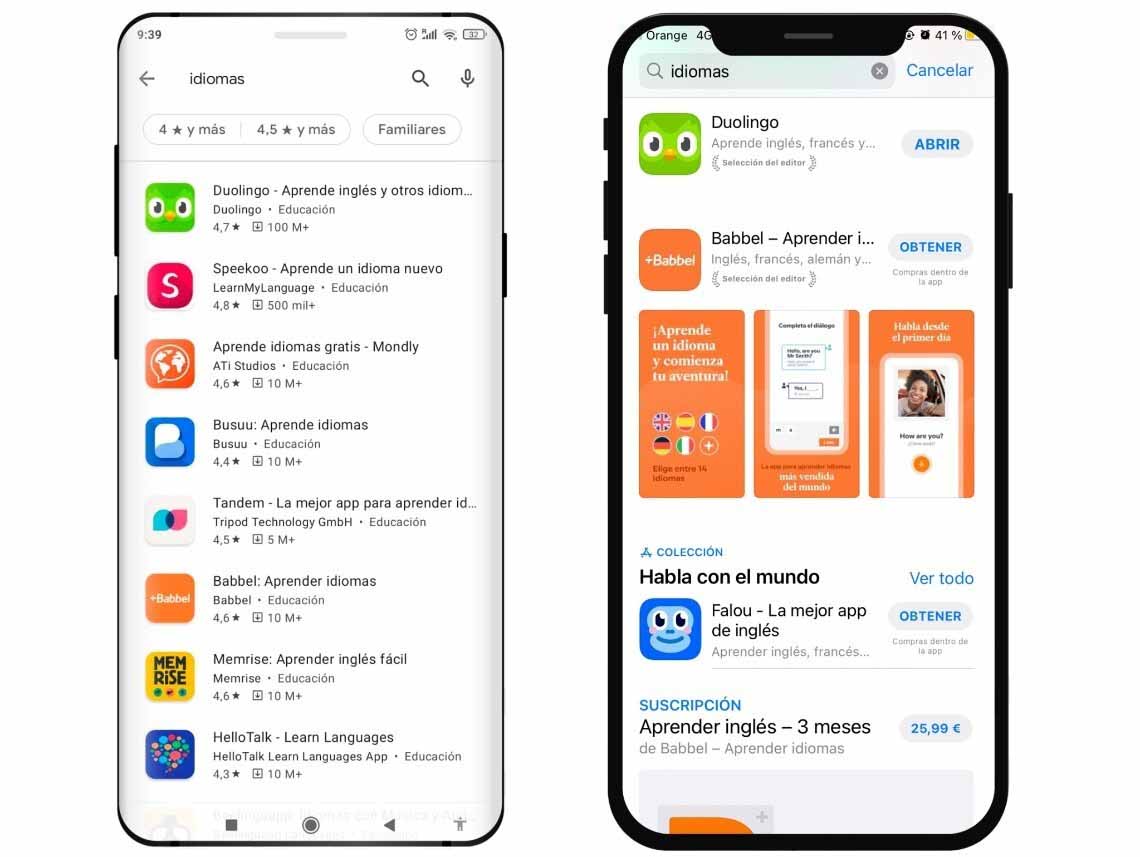
Finding potential rivals in the category you want to rank in on the stores is an alternative strategy. There are numerous choices available on the market to do this, but if you don't know which one to choose, you can always utilize Appranking. Just sign up for a free account to receive access to the Top Charts section, where you can get insights by category and by nation.
Competitor ASO analysis
If you made it there, you must already be aware of several apps that might be interesting as rivals. This is the time to begin screening.
Enter the list of every competitor. What you need to consider right now is whether the on-metadata textual fields, including the Title and the Short Description, are optimized in terms of keywords (on Google Play, on the App Store the equivalents are the App Name and the Subtitle). Whether they don't, they either didn't consider ASO or are placing a lot of emphasis on the brand. Check to see if they employ relevant keywords in these categories and if they are close to the maximum number of characters in each one.
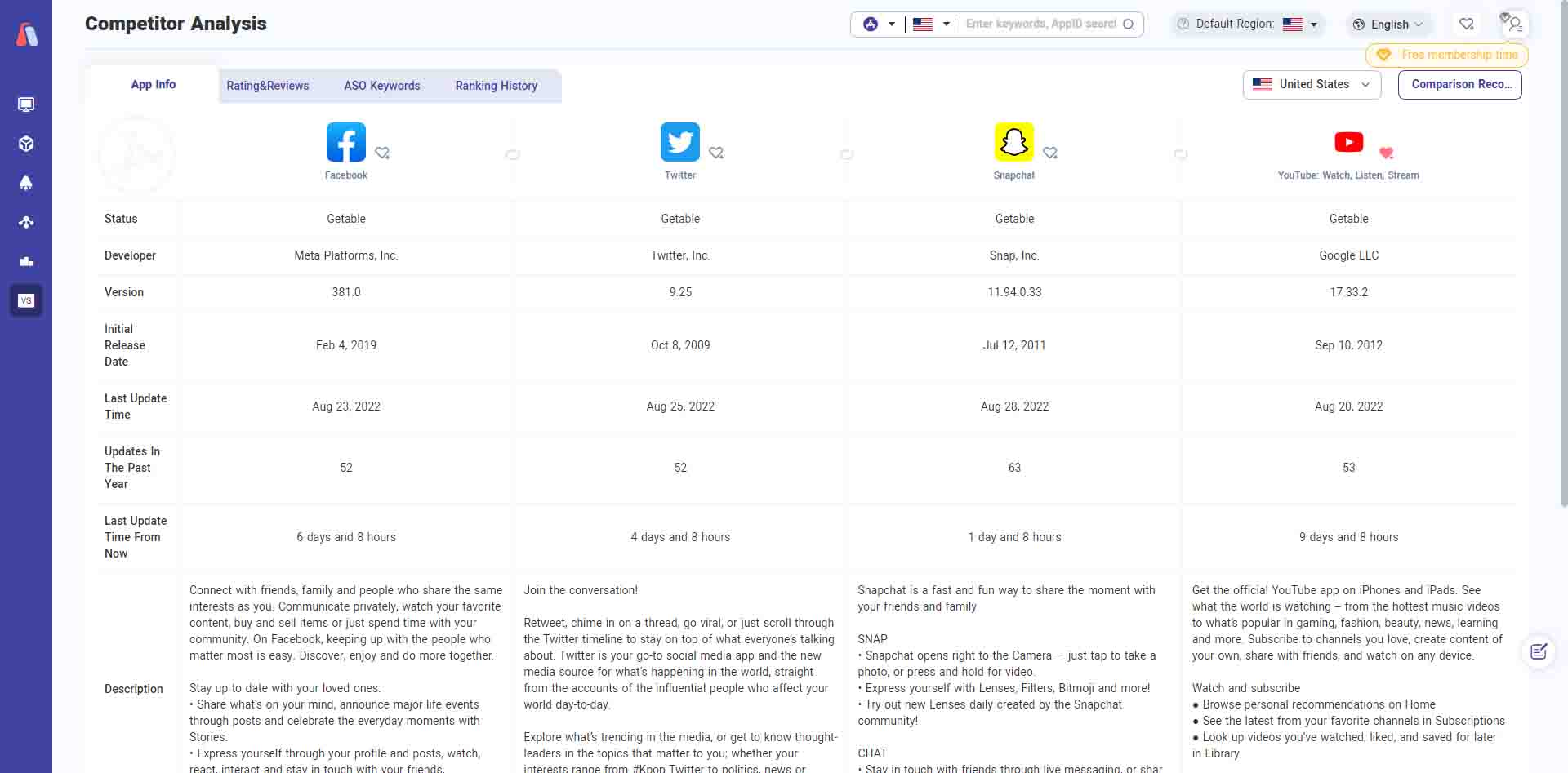
Even better, you can monitor the keywords in these areas and track the volume of searches using Appranking's ASO tool. It can help you find new keywords for which your app can rank as well as confirm whether your competitors have made any changes to their listings. Dual benefits!
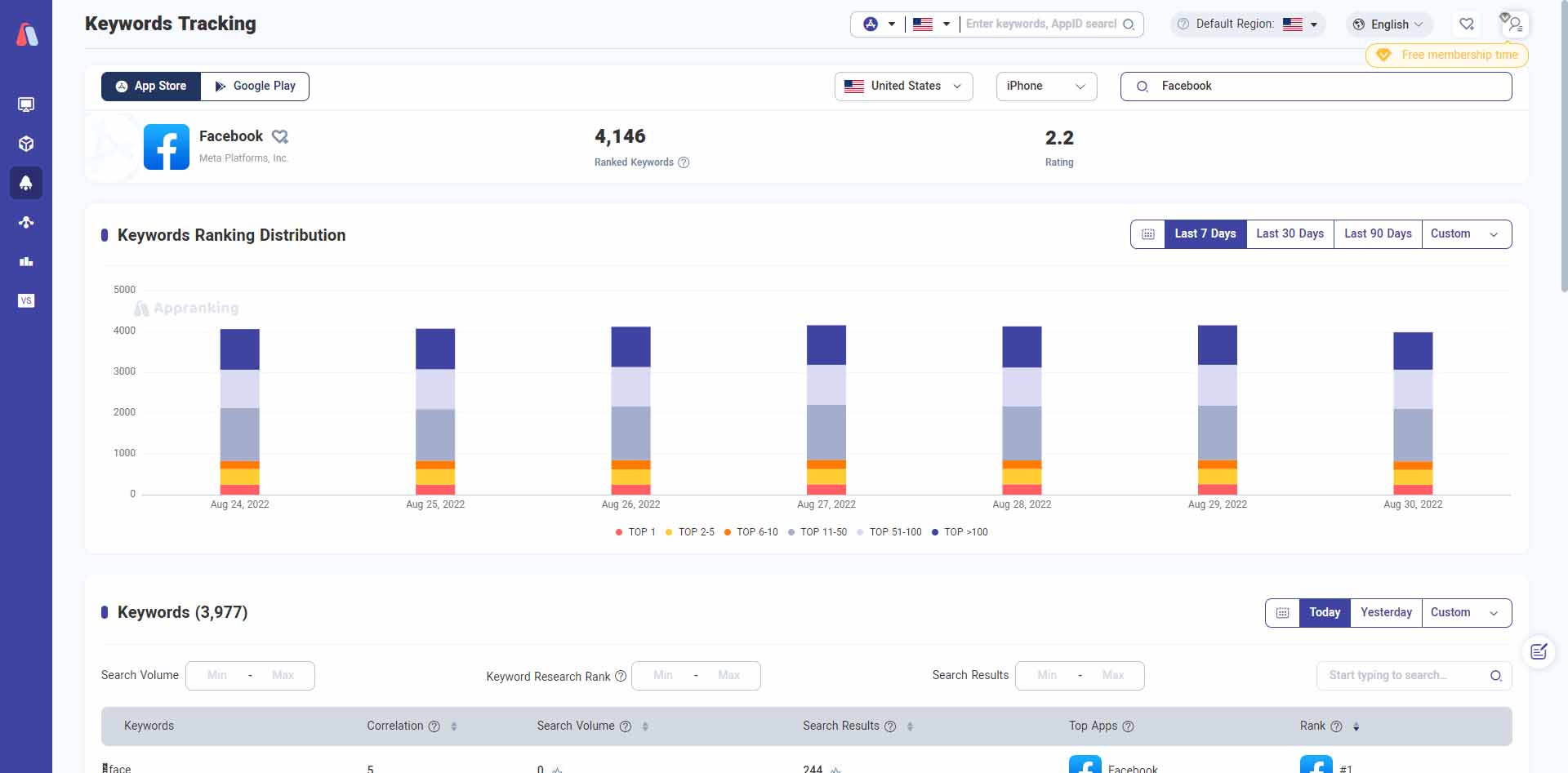
Let's look at two actual examples of Google Play-published apps to make sure everything is obvious.
As an illustration, look at the Memrise language learning software on the left. You can see that the app's title contains phrases like "Aprender inglés" (learning English) and "inglés fácil," which are also combinable among them and allow the app to rank for keyword combinations like those (easy English). Additionally, the succinct description was optimized with phrases like "cursos," "gratis," "inglés," "francés," or "japonés" (japonese). Additionally, both fields make the most of the character count to contain every potential term.
Let's look at the other app now: Idiomas might use some ASO optimization as it does not make the most of the title's available characters to include additional keywords. Even though the 17 characters "Nunca fue tan" (it never was so [easy]) may be changed for keywords with organic search traffic, the short description is more optimized.
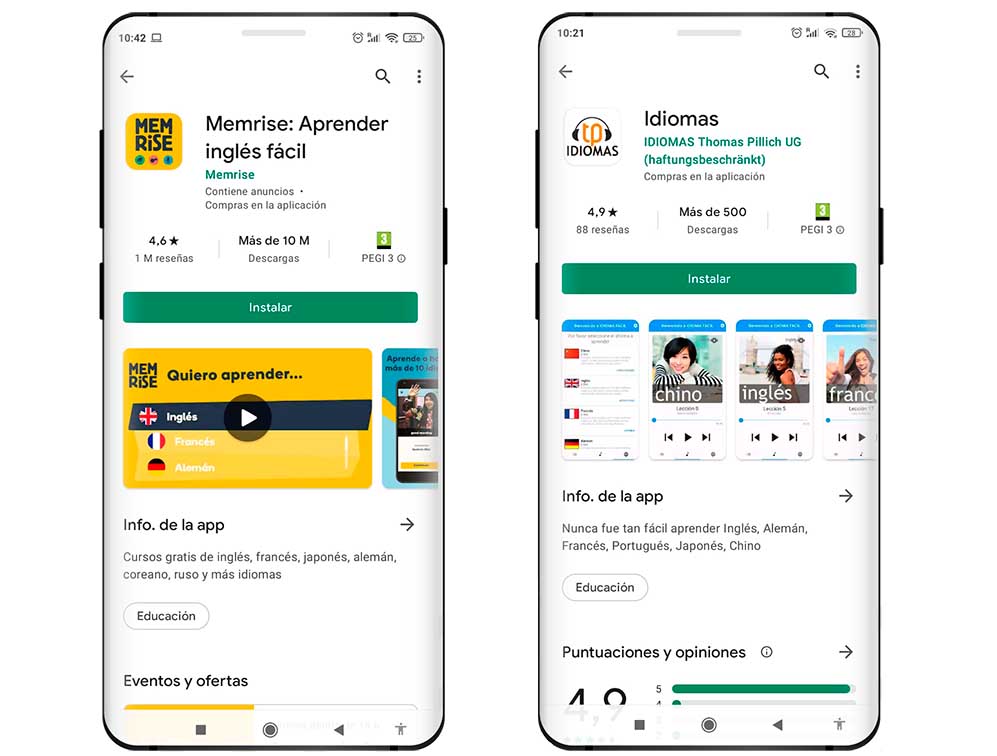
Ratings and reviews
The final and most important step is to look at the competitors' downloads and growth, their average rating, the volume of their accumulated ratings, their reviews (to see the strengths and weaknesses mentioned by the users), the app weight, and the update frequency after choosing the competitors who work in your category and have good ASO optimization.
Before, we stressed the need of considering your app's ability to compete with established market giants. You may check to see if this is the case by looking at the overall number of downloads and the cumulative ratings of the possible rivals. You can get a sense of which rivals are the best fits by looking at the store listings on Google Play and the App Store, which contain an approximation of these characteristics. However, the most effective method to achieve this is to monitor these KPIs using an ASO / App Marketing Intelligence platform.
One problem with the stores' approximations is that Google Play provides a single listing for each program, sharing worldwide download and rating data, but the App Store divides this data into separate country-level sharing and only makes the ratings public. This information can give you a general idea of the size and strength of your competitors, but the best way to get more precise information is to use an ASO or app marketing intelligence tool, both of which are typically paid services.
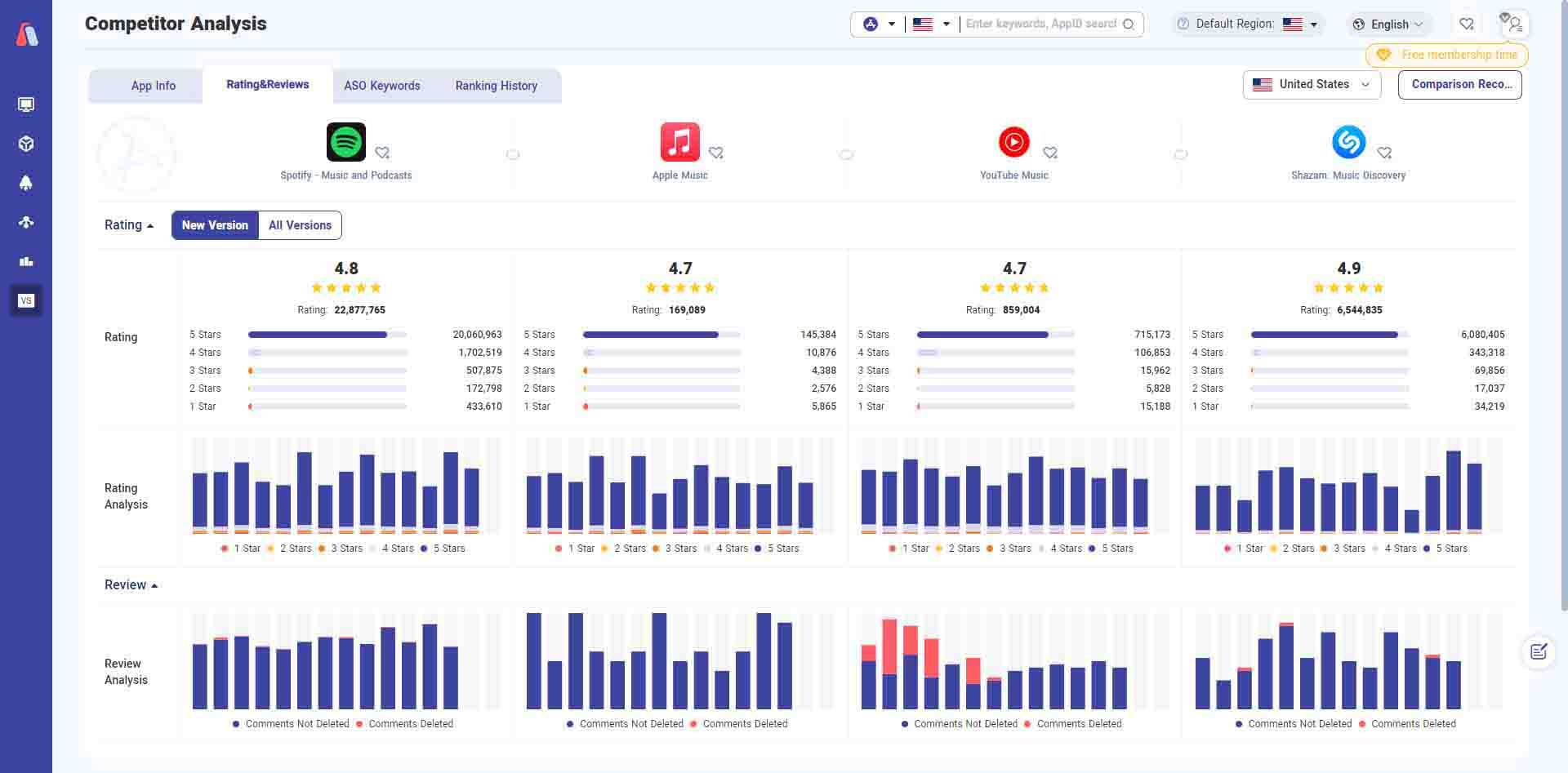
Conclusion
With the detailed information Appranking offers, you can have a full understanding of your competitors to guide your own app promotion strategy. In addition to the many features mentioned above, we also have other very useful and systematic services. Welcome to click Appranking have your account and get a start to experience.
Empower your team with our App Marketing Intelligence
Free forever. Cancel anytime.


